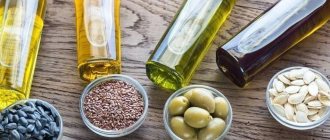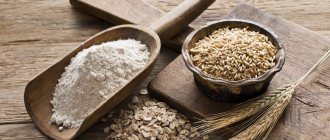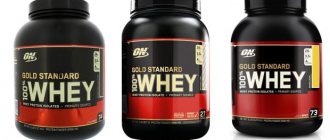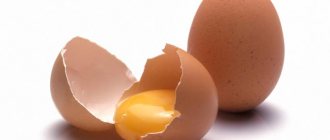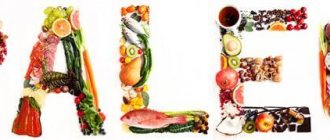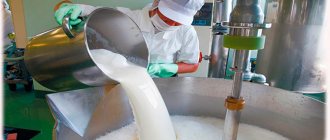What is soy
Soybean is an ancient cultivated plant. Belongs to the legume family. The fruits of this plant contain more than 35% protein, unique in its composition of amino acids, and many nutrients. The culture is herbaceous, annual. Soy is an inexpensive and healthy alternative to meat. The main characteristics of the plant that determine the popularity of its consumption as food and use in other areas:
- high productivity;
- the ability to produce many different products from raw materials;
- high protein content;
- the possibility of preventing cardiovascular diseases, osteoporosis, heart attack;
- B vitamins, potassium, calcium and essential polyunsaturated fatty acids.
Where does it grow?
China is considered the birthplace of the plant. It is cultivated on plantations in Asia, North and South America, Europe, Argentina, Australia on the islands of the Pacific and Indian oceans. In Russia, cultivation of the crop is practiced, as a rule, in the Far East. The Amur region provides 60% of all domestic reserves. The rest is grown in the Primorsky and Khabarovsk territories, Krasnodar and Stavropol.
What does soy look like?
The stems of the cultivated variety vary in thickness and can be either bare or pubescent. Height from 15 cm to 2 meters. The leaves of all plant species are trifoliate. The venation is pinnate. There is fluff on the leaves. There are underdeveloped subulate stipules. The soybean fruit is a bean that opens with two valves along the dorsal and ventral sutures. Contains 2-3 seeds. The beans are large, 4-6 cm long. They are dense and crack very rarely. Soybean seeds are oval in shape. Color – yellow, less often brown, green or black.
Origin story
Soybean is the oldest cultivated plant on the planet. According to scientists, the plant formed as a crop about 6-7 thousand years ago in China.
Reference. In China, the crop is highly valued and called the "Great Bean".
Mentions of soybeans are found in ancient Chinese literature dating back to the period around 3-4 thousand years BC. e. Images of the culture have been discovered by historians in China on turtle shells, bones and stones.
From China it was brought to Korea - this happened around 500-400 BC. e. There it also received the status of an important cultivated plant and was actively used by the local population for food.
Around the same period of time, the plant came to Japan, since the Japanese islands were colonized by Korea for a long time.
In 1691, the German botanist Engelbert Kaempfer visited the eastern countries. He became interested in soybeans, and he described it in detail in his work “Amoentitatum Exoticarum Politico-Physico-Medicarum”. After this, the culture became known to European naturalists. However, it began to be cultivated in Europe somewhat later: from 1790 in England and from 1885 in France.
In our country, the first experimental plantings of the crop were carried out in 1877 on the territory of the Taurida and Kherson provinces. Selection work was first carried out at the Amur Experimental Plant in the period from 1912 to 1918. However, during the Civil War, the experimentally bred population was lost.
Amur yellow soybean was restored by 1923-1924, but the phenotype of the variety was somewhat different from the original one. As a result of the active work of breeders during the same period, the first domestic variety was obtained - the Amur yellow population, which was actively cultivated until 1934.
Mass introduction and the beginning of cultivation of the crop in Russia began in 1924-1928. - they began to grow it in the Rostov region, Stavropol and Krasnodar territories.
This is interesting:
Varieties and varieties of beans: faba (garden), ornamental, large-fruited.
Green mung beans - what they are and how they are useful.
Chemical composition and nutritional value
The plant is rich in easily digestible protein with a balanced set of amino acids. The ratio of BJU is optimal. Soy contains virtually no carbohydrates, which makes it low in calories. What else is included in its biochemical composition:
- protein – 40%;
- fats – 20%;
- glucose, sucrose, fructose – 10%;
- trace elements: nickel, boron, iodine, aluminum, manganese, molybdenum, cobalt, iron;
- macroelements: sulfur, phosphorus, silicon, potassium, sodium, magnesium, calcium;
- starch;
- folic acid;
- retinol;
- tocopherols;
- pectins;
- vitamins B, E, D, beta-carotene;
- niacin;
- riboflavin;
- polyunsaturated fatty acids;
- enzymes;
- thiamine;
- pantothenic acid;
- isoflavonoids;
- choline;
- linolenic acid;
- phospholipids;
- choline;
- lecithin.
What are the benefits of soybeans?
The composition of the plant is unique, so moderate consumption of dishes from it has a beneficial effect on the body. Benefits of soy:
- The plant contains a lot of complete protein . It is often eaten by athletes, bodybuilders, and vegetarians. It saturates well and contains few calories.
- Antioxidant action . Soy contains many vitamins, the consumption of which has this effect.
- Protein breakdown and absorption . This action is ensured by the contained food enzymes, especially phytic acid.
- Acceleration of metabolism, reduction of cholesterol levels, restoration of nervous system cells . These actions are ensured due to the high content of choline and lecithin. Because of this effect, soy is often included in the diet of obese patients and patients with abnormal metabolism.
- The plant removes heavy metal salts and radionuclides from the body.
- Consumption provides prevention of stomach and duodenal ulcers.
- Soy affects the production of insulin by the pancreas and improves its functioning. It is recommended for use in diabetes mellitus.
- Positive effect on bone tissue . Beans are useful for the treatment and prevention of arthritis.
Phytoestrogens for women
Soy contains plant substances that act on the body in the same way as estrogen. Phytoestrogens work selectively. They compensate for the lack of female sex hormone. When there is an excess of estrogen, substances suppress its excessive activity. Isoflavonoids (genistein, etc.) from plants are absolutely natural. Hormonal regulation with their help has no side effects. Why soy is beneficial for women:
- When consumed, the risk of developing malignant breast cancer tumors is reduced . Hormone-dependent formations occur when estrogen is produced excessively, and substances contained in the plant suppress this process.
- Beans are rich in lecithin . This substance prevents fat deposition, burns formed cells, and helps fight excess weight.
- Eating soy products reduces menopausal symptoms caused by a lack of estrogen . Thanks to them, hot flashes will disappear and the risk of developing osteoporosis and cardiovascular diseases will decrease. Women during menopause are recommended to eat 150-200 g of soy products per day.
The benefits of sprouted soybeans
Sprouts contain a lot of valuable protein. They contain a full range of vitamins, biologically active substances, and enzymes necessary for the body. During germination, the concentration of useful elements increases several times. The calorie content of sprouts is very low. Their use helps cleanse the intestines of toxins and carcinogens. The swollen coarse fibers of the sprouts absorb everything harmful as they pass through the digestive tract. Sprouted soybeans contain 30% more fiber than wheat.
It is advisable to use not canned sprouts, but those prepared with your own hands, they are healthier. To make them, soybeans need to be soaked for 6 hours. Afterwards it should be washed and covered with damp gauze. You need to make sure that the beans do not dry out; there should always be some liquid left underneath them. You need to change the water twice a day, while washing the fruits. Sprouts will appear on the second day. They will be ready for use in 3-4 days. It is better to eat sprouts not raw, but blanched in boiling water for a minute.
Soybean oil
This product is very useful, contains many biologically active substances, minerals, and vitamins. In eastern countries, oil has been consumed for a long time, but in Europe it became popular only in the last century. The substance is obtained after pressing and extraction of soybeans. The oil is deodorized or refined to impart consumer qualities. The result is a straw-yellow liquid with a pleasant light aroma.
The oil is used to make lecithin. This substance is added to certain foods, medications, soaps, and dyes. You can fry something in soybean oil, season salads with it, and use it for baking. 100 g contains 890 kcal. Soybean oil contains significantly more microelements and tocopherol than sunflower or olive oil. Use brings the following benefits:
- The immune system works better.
- Prevention of cardiovascular diseases and atherosclerosis is carried out thanks to the contained microelements and vitamins.
- Metabolism is regulated. Prevention of diseases of the digestive tract is carried out.
- Thanks to choline and organic acids, the functioning of the liver and heart muscle improves, and cholesterol levels in the blood are regulated.
It is recommended to consume 1-2 tablespoons of oil per day. The product is not only taken orally. The oil is actively used in cosmetology. The product slows down the aging process, actively nourishes and moisturizes the skin of the face and body of the hands, and can smooth out wrinkles. It is better to avoid eating and using oil if you are allergic to soy protein. Contraindications include pregnancy, risk of migraine attacks, liver and kidney failure.
Soy lecithin
The substance produced from beans performs important functions for the human body, taking part in the restoration of brain cells and nervous tissue. Lecithin is responsible for memory, motor activity, thinking, and learning. The substance regulates fat metabolism, cholesterol levels, promotes rejuvenation and helps fight many diseases.
Soy lecithin is a product of the emulsifier group. Used for mixing substances with different properties. Lecithin as a food additive is found in spreads, bread, margarine, semi-finished products, sausages, chocolate, infant formula, dairy products, and fast food. It is worth noting that manufacturers in most cases extract the substance from soybeans that have undergone genetic modification. Therefore, products with it should be included in the diet selectively.
Natural soy lecithin is very beneficial for the body. it consists of the following elements:
- B vitamins;
- choline;
- linoleic acid;
- phosphoethylcholine;
- phosphates;
- inositol
Soy lecithin is sold as dietary supplements. Such dietary supplements are recommended to be taken for diseases of the blood vessels and heart, liver, lipid metabolism disorders, memory problems, and pregnancy. Lecithin is added to cosmetics. It nourishes, smoothes and moisturizes the skin, in addition, it gives the product the right consistency. Beneficial properties of natural soy lecithin:
- Reduces cravings for nicotine . It contains the neurotransmitter acetylcholine, which helps brain receptors wean off smoking.
- Stimulates metabolism . Lecithin destroys fats, prevents obesity, and reduces the load on the liver.
- Protects against stress . Forms the myelin sheath around nerve fibers.
- Clears blood vessels of cholesterol plaques, strengthens the heart muscle . Contains phospholipids, which are involved in the formation of amino acids that strengthen the myocardium.
- Stimulates the secretion of bile . Lecithin dissolves fats. Because of this, the bile dilutes and is not deposited on the walls of the ducts and gallbladder.
- Helps the functioning of brain cells . Promotes the preservation and development of memory.
Agricultural technology
Before sowing soybean seeds, it is necessary to cultivate the soil - carry out early plowing to a depth of 25 cm. When cultivating the soil, it is important to remove all existing weeds.
Before planting soybean seeds, they must be cleaned and treated with nitragine. The soil temperature at the time of planting the seeds should be about +15 °C. The distance between the rows in the garden bed is from 30 to 60 cm, which depends on the climate and humidity. The optimal planting depth for soybean seeds is 5 cm.
Proper care of soybean crops includes harrowing the soil before emergence, thoroughly destroying weeds, weeding and loosening the soil.
Soybeans can be fertilized with various fertilizers, but the emphasis should still be placed on phosphorus fertilizers. Soybean responds very well to complex application of mineral and organic fertilizers.
Soybean maturity occurs when the plant's beans turn brown and the leaves turn yellow and fall off. On agricultural land, combines or harvesting machines are used to harvest soybeans.
In order for soybean seeds to be stored for a long time, the beans must be dried and threshed, and then stored in a layer no more than one meter high at a relative humidity of 12%.
Harm and dangerous consequences
Consuming any product in excess can lead to health problems. What harm can soy cause to the body:
- The product has a goitrogenic effect. The substances contained in it can provoke disruption of the thyroid gland and endocrine system. This causes the formation of goiter, thyroiditis and other diseases.
- The composition contains oxalic acid, which contributes to the development of urolithiasis.
- Excessive consumption of soy products can cause hypertrophy of the pancreas and impair its functioning.
- The enzymes contained in the product slow down the process of absorption of calcium, zinc, iron, iodine from other foods.
- Soy phytoestrogens can disrupt the functioning of the female reproductive system, although they are considered beneficial. They can cause menstrual irregularities, accelerated development in girls, and problems with childbirth. During pregnancy, they increase the risk of miscarriage and can cause fetal development defects. Phytoestrogens are also unsafe for men. Their excess causes female obesity, decreased potency, and delayed development in boys.
- The substances contained in the product accelerate the progression of Alzheimer's disease and senile dementia.
Genetically modified soybeans
It's sad, but such a product and derivatives are found on the market very often. Eating genetically modified soy is dangerous. Her genes are artificially changed by inactivation so that the plant does not respond to herbicide treatment. The consequences of eating products made from such raw materials have not yet been fully studied. It has been precisely confirmed that genetically modified soybeans do not have beneficial properties and cause obesity and allergic reactions.
- How to treat a sore throat while breastfeeding: folk remedies and medications
- How to fry fish in a frying pan and for how long
- Ammonia-anise cough drops. Instructions for the use of ammonia-anise drops for adults and children
Mammary cancer
Soy isoflavones, which act like estrogen in the body with a significant increase in consumption, may be one of the reasons for the increased risk of breast cancer.
Numerous studies do not support these claims. Interestingly, soy consumption in Asian women is associated with a lower risk of cancer. In Western countries, soy does not affect the development of breast cancer at all. This is due to the consumption of various types and products of soy, which is used in Asian and Western cuisine. Typically in Asia, soybeans are consumed whole or as fermented products. And in the West, these are most often food additives.
Contraindications for use
There are categories of people who need to eat soy products with caution or are strictly prohibited. Even a completely healthy person is not recommended to consume more than 150-200 g per day and avoid genetically modified beans. People with diabetes or obesity are allowed to eat soy in minimal quantities. Categorical contraindications:
- pregnancy;
- childhood;
- diseases of the endocrine system;
- individual intolerance;
- young age of women and men.
Effect on fertility
Research on soy products has shown conflicting results about the relationship between soy consumption and fertility. One study found that bean consumption improved reproductive function in women undergoing new fertility treatments.
Along with this, scientists have found that soy protects against BPA, a chemical compound used in the production of plastic. Women who consumed soy before IVF were more likely to have a successful pregnancy. Soy consumption by the expectant father does not affect the pregnancy rate during IVF, scientists say.
At the same time, it has been suggested that soy is harmful in some cases to fertility. A study of 11,688 women found that high soy isoflavone intake was associated with a lower likelihood of conception and childbirth. Scientists say more research is needed to explore the relationship between fertility and consumption.
What products contain soy?
Thanks to the properties of the plant, it is possible to produce many different foods from it. Soy products are used for preparing dishes and enriching them. They are especially popular in vegetarian cuisine and East Asian countries. Types of soy products:
- Natto . Product made from fermented whole boiled seeds.
- Yuba . Dried foam from the surface of soy milk. Used raw or dried. Reminds me of asparagus in texture. Pairs with vegetables, grains and potatoes.
- Flour.
- Edamame . A snack made from boiled green beans with seeds.
- Oil . Pleasant to the taste, suitable for frying and dressing, contains a large amount of vitamin E.
- Tofu . Cheese with different consistency. It can be soft, jelly-like, or hard. Pressed into blocks. When frozen it is yellowish, then turns white. Very porous.
- Meat . Textured flour product. The structure and appearance resemble real meat of animal origin.
- Tempe . Fermented seed product. Prepared with the addition of a fungal culture. Pressed into briquettes. Has a slight ammonia odor.
- Pasta . Gochujang, doenjang, miso.
- Sauce . Liquid dressing for various dishes made from fermented beans.
- Vegetarian sausages , sausages, cutlets, burgers, cheeses.
- Chocolate . Low-calorie dessert that does not contain animal fats.
Dairy
A lot of tasty and healthy things are made from soybeans. After special processing, milk and derivatives are obtained from the plant, which are an excellent alternative to animal products and practically do not differ in taste. Soy milk does not contain lactose or cholesterol. Scroll:
- Yogurt . Contains a minimal amount of vegetable fats. The vitamins and microelements it contains are no different from ordinary yogurt. Vegans often include it in their diet.
- Kefir.
- Milk . Used in its pure form, suitable for cooking porridge, making cocktails, and desserts. Does not contain galactose.
- Mayonnaise.
- Tofu . Cheese analogue. Does not contain cholesterol. Perfectly absorbed by the body. Prevents the development of cancer cells, promotes the restoration and strengthening of bone and muscle tissue. Goes great with herbs, vegetables, seaweed
- Curdled milk . Milk fermentation product.
- Cottage cheese . It is obtained by fermenting milk with starter or acid and pressing the protein clots.
- Ryazhenka.
Soy flour
It is made from dry seeds or meal. Contains almost no starch. Soy flour contains significantly more nutrients and protein than other types. Has binding properties. Because of this, it is good to add such flour to the dough in equal proportions with wheat or other cereals. Eggs can be omitted. Ideal for all types of lean baked goods.
Meat
Their defatted flour is produced by extrusion cooking. Soy meat is low in calories and contains a minimal amount of cholesterol. Perfect for dietary nutrition, vegetarian lifestyle. During meat production, all the nutritional properties of the beans are preserved. It contains eight essential acids, so it increases hemoglobin and improves blood quality. Rich in iron and minerals. Well absorbed by the body.
Before cooking, the meat is soaked in water, broth or broth for some time, or boiled, depending on the instructions on the package. The pieces soften and the texture becomes similar to the real thing. You can add any sauces, salt, seasonings and spices to taste. After softening, you can cook with the meat the same as with regular meat: main courses, soups, salads.
Effect on the gastrointestinal tract
Recent animal studies have shown that some compounds found in soy negatively affect the digestive system. Soy agglutinins are a type of antinutrient that can cause negative side effects by affecting intestinal barrier function. They can disrupt the health of the microbiome, which is a group of beneficial bacteria that live in the gastrointestinal tract.
Fortunately, sprouting, soaking, fermenting, and cooking soy products helps reduce antinutrients and increase digestibility.
It is clear that more serious research using modern technology is needed to determine the impact of soy consumption on health. The current findings suggest that consuming whole or fermented soy in moderation is not only safe, but also beneficial for most people.
Found a violation? Report content
Soy - cooking recipes
A huge number of dishes can be made from the plant and its derivatives: first courses, second courses, side dishes, salads, desserts. Almost all of them are perfect for dietary and vegetarian meals. When choosing dishes, take into account that soy is best combined with vegetables and grains. During the cooking process, you can safely add seasonings, spices, sauces and other ingredients to enrich the taste.
Syrniki
- Time: 35 minutes.
- Number of servings: 4 persons.
- Calorie content of the dish: 200 kcal (per 100 g).
- Purpose: breakfast, dessert.
- Kitchen: homemade.
- Difficulty: easy.
Syrniki are made from tofu, which is similar in structure to cottage cheese. This is a great option for a light and healthy diet breakfast. The cheesecakes turn out fluffy and rosy. They should appeal not only to adults, but also to children. According to the recipe, wheat flour is added to the dish, but you can use half the soy flour. In this case, do not put eggs in the dough.
Ingredients:
- vegetable oil – 2 tbsp. l.;
- tofu – 400 g;
- wheat flour – 7-8 tbsp. l.;
- eggs – 2 pcs.;
- vanillin – 0.5 g;
- sugar – 3 tbsp. l.
Cooking method:
- Pat the tofu dry. If it is frozen, then first bring it to room temperature and squeeze it out.
- Grate the tofu on a fine grater.
- Add eggs. Mix thoroughly.
- Add sugar, vanillin.
- Gradually add flour. Depending on how wet the tofu is, you may need less than what the recipe calls for.
- Knead the dough so that it holds its shape well.
- Form flat cheesecakes. Roll in flour.
- Heat the oil in a frying pan. Fry the cheesecakes for 2-3 minutes on each side.
Cutlets
- Time: 1 hour.
- Number of servings: 6 persons.
- Calorie content of the dish: 195 kcal (per 100 g).
- Purpose: main dish.
- Kitchen: homemade.
- Difficulty: medium.
Beans can be used to make wonderful cutlets, low in calories and very nutritious. You can serve them with mashed potatoes, rice, buckwheat. If you are on a diet, then make a simple vegetable salad as a side dish. The cutlets are suitable for those who are fasting; they contain all the products allowed for this period. The recipe is not too complicated, any housewife can master it.
Ingredients:
- soybeans – 2 cups;
- flour – 4 tbsp. l.;
- onion – 4 medium heads;
- dried ginger - a couple of pinches;
- garlic – 6 cloves;
- salt, pepper - to taste;
- potatoes 4 medium tubers.
Cooking method:
- Sort the beans and soak overnight. In the morning, rinse, cover with clean water and cook until soft.
- Peel the vegetables. Cut into pieces. Fry two onions in vegetable oil.
- Combine beans, potatoes, garlic. Add onions, both raw and fried.
- Pass the products through a meat grinder or grind with a blender.
- Add spices. You can add some chicken seasoning. Mix the minced meat thoroughly.
- Heat a frying pan with oil. Form cutlets. Roll in flour.
- Fry the cutlets until golden brown on both sides.
Soybean soup
- Time: 45 minutes.
- Number of servings: 4 persons.
- Calorie content of the dish: 153 kcal (100 g).
- Purpose: first course, lunch.
- Cuisine: oriental.
- Difficulty: easy.
Soybean soup is an easy dietary first course. Prepared quickly from the simplest ingredients. A serving of this soup for lunch will help you not get hungry until late in the evening. It should be cooked in vegetable broth, but meat broth can also be used. Experiment by adding different seasonings, dried herbs, and spices to the soup. This way you can change the taste of the dish to suit your preferences.
Ingredients:
- soybeans – 2 cups;
- spices, salt, pepper;
- potatoes – 10 pcs.;
- vegetable broth – 4 l;
- onions – 2 pcs.;
- wheat flour – 2 tbsp. l.;
- butter – 1-2 tbsp. l.
Cooking method:
- Soak the beans overnight. In the morning, rinse and cook until soft.
- Peel the onion. Grind. Fry until golden brown in butter. Add flour and a little broth. Rub until all lumps disappear.
- Add onion dressing to the heated broth. Add beans.
- Half an hour after boiling, add peeled and diced potatoes.
- Cook the soup for another half hour. Before turning off, add salt and seasonings. You can add a little soy sauce.
